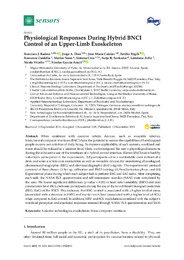Por favor, use este identificador para citar o enlazar este ítem:
https://hdl.handle.net/11000/31255Registro completo de metadatos
| Campo DC | Valor | Lengua/Idioma |
|---|---|---|
| dc.contributor.author | Badesa, Francisco J. | - |
| dc.contributor.author | García Aracil, Nicolás | - |
| dc.contributor.author | Catalán, José María | - |
| dc.contributor.author | Zollo, Loredana | - |
| dc.contributor.author | Díez, Jorge A. | - |
| dc.contributor.author | Crea, Simona | - |
| dc.contributor.author | Nann, Marius | - |
| dc.contributor.author | Cordella, Francesca | - |
| dc.contributor.author | Trigili, Emilio | - |
| dc.contributor.author | Vitiello, Nicola | - |
| dc.contributor.author | Soekadar, Surjo R. | - |
| dc.contributor.other | Departamentos de la UMH::Ingeniería de Sistemas y Automática | es_ES |
| dc.date.accessioned | 2024-02-07T17:54:59Z | - |
| dc.date.available | 2024-02-07T17:54:59Z | - |
| dc.date.created | 2019 | - |
| dc.identifier.citation | Sensors Volume 19 Issue 22 10.3390/s19224931 | es_ES |
| dc.identifier.issn | 1424-8220 | - |
| dc.identifier.uri | https://hdl.handle.net/11000/31255 | - |
| dc.description.abstract | When combined with assistive robotic devices, such as wearable robotics, brain/neural-computer interfaces (BNCI) have the potential to restore the capabilities of handicapped people to carry out activities of daily living. To improve applicability of such systems, workload and stress should be reduced to a minimal level. Here, we investigated the user’s physiological reactions during the exhaustive use of the interfaces of a hybrid control interface. Eleven BNCI-naive healthy volunteers participated in the experiments. All participants sat in a comfortable chair in front of a desk and wore a whole-arm exoskeleton as well as wearable devices for monitoring physiological, electroencephalographic (EEG) and electrooculographic (EoG) signals. The experimental protocol consisted of three phases: (i) Set-up, calibration and BNCI training; (ii) Familiarization phase ; and (iii) Experimental phase during which each subject had to perform EEG and EoG tasks. After completing each task, the NASA-TLX questionnaire and self-assessment manikin (SAM) were completed by the user. We found significant differences (p-value < 0.05) in heart rate variability (HRV) and skin conductance level (SCL) between participants during the use of the two different biosignal modalities (EEG, EoG) of the BNCI. This indicates that EEG control is associated with a higher level of stress (associated with a decrease in HRV) and mental work load (associated with a higher level of SCL) when compared to EoG control. In addition, HRV and SCL modulations correlated with the subject’s workload perception and emotional responses assessed through NASA-TLX questionnaires and SAM. | es_ES |
| dc.format | application/pdf | es_ES |
| dc.format.extent | 15 | es_ES |
| dc.language.iso | eng | es_ES |
| dc.publisher | MDPI | es_ES |
| dc.rights | info:eu-repo/semantics/openAccess | es_ES |
| dc.rights | Attribution-NonCommercial-NoDerivatives 4.0 Internacional | * |
| dc.rights.uri | http://creativecommons.org/licenses/by-nc-nd/4.0/ | * |
| dc.subject | Assistive technologies | es_ES |
| dc.subject | exoskeleton | es_ES |
| dc.subject | brain-computer interfaces | es_ES |
| dc.subject.other | CDU::0 - Generalidades.::04 - Ciencia y tecnología de los ordenadores. Informática. | es_ES |
| dc.title | Physiological Responses During Hybrid BNCI Control of an Upper-Limb Exoskeleton | es_ES |
| dc.type | info:eu-repo/semantics/article | es_ES |
| dc.relation.publisherversion | https://doi.org/10.3390/s19224931 | es_ES |

Ver/Abrir:
2019_sensors.pdf
9,31 MB
Adobe PDF
Compartir:
 La licencia se describe como: Atribución-NonComercial-NoDerivada 4.0 Internacional.
La licencia se describe como: Atribución-NonComercial-NoDerivada 4.0 Internacional.
.png)